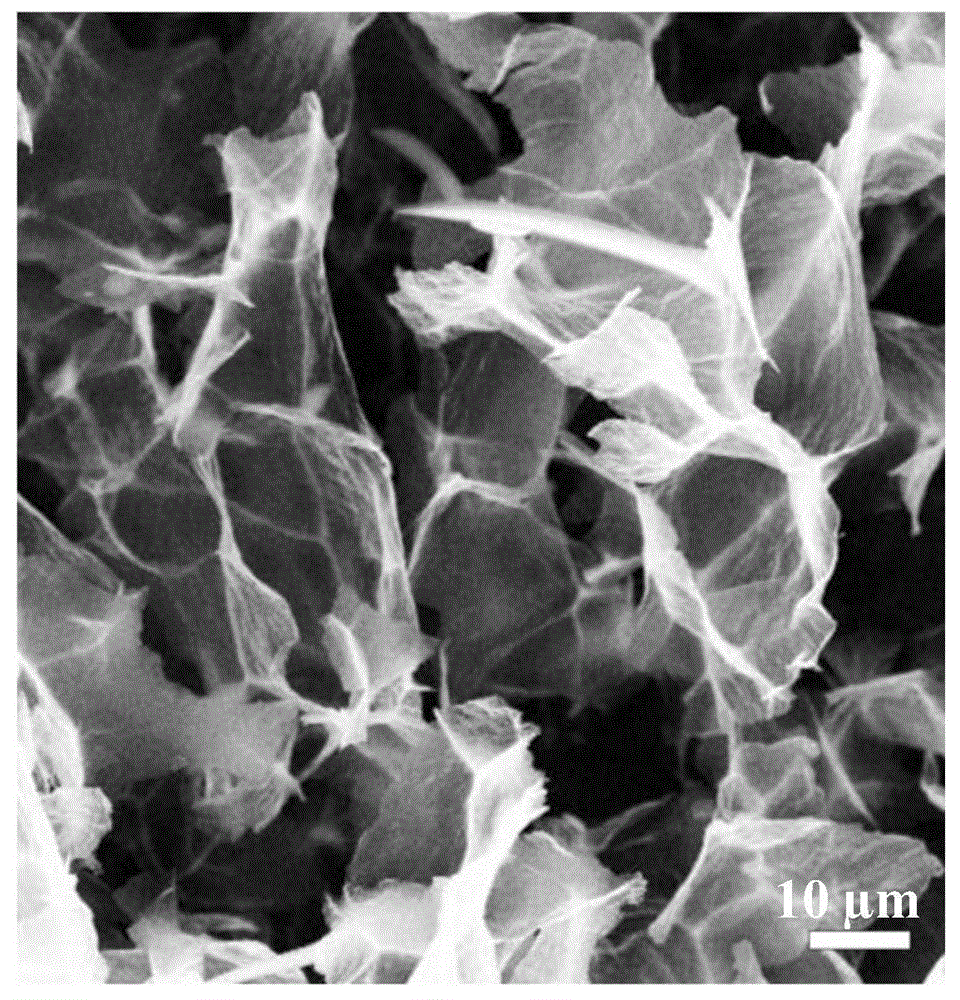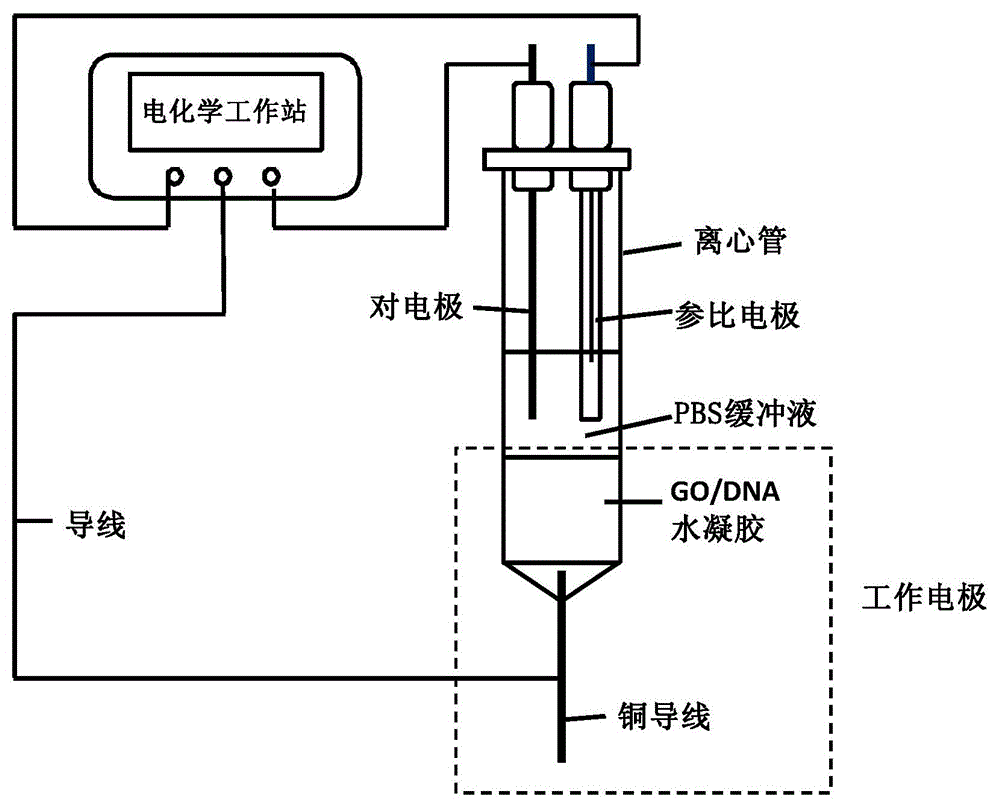Preparation method and application of hydrogel electrode
A hydrogel and electrode technology, which is applied in the preparation of hydrogel electrodes and the field of electrochemical detection of mitochondrial DNA mutations in ovarian cancer, can solve the problems of inactivation of biologically active molecules, difficulty in clinical application, complex structure, etc., and achieve simple preparation methods , Improving hybridization efficiency and low cost
- Summary
- Abstract
- Description
- Claims
- Application Information
AI Technical Summary
Problems solved by technology
Method used
Image
Examples
Embodiment 1
[0043] Accurately weigh 2g of natural graphite powder and 1g of sodium nitrate into a round-bottomed flask, and mix evenly with 46mL of concentrated sulfuric acid in an ice bath; then slowly add 6g of potassium permanganate to the mixture to keep the mixture at a low temperature Stir and react at 20°C for 2h, then transfer the mixture to an oil bath at 35±5°C for 30min, the reaction system is a brown viscous liquid; then slowly add 92mL deionized water to the mixture , and raise the temperature to 95±5°C to continue the reaction for 3 hours, the mixture turns from brown to bright yellow, and finally add 400mL of pure water to terminate the reaction, and at the same time add 6mL of 30% H 2 o 2 The solution neutralizes unreacted potassium permanganate. After the above solution was cooled to room temperature, suction filtration was performed, and the filter cake was repeatedly washed with 100 mL aqueous hydrochloric acid (1:10) and a large amount of pure water to remove residual...
Embodiment 2
[0045] Accurately draw an equal volume of graphene oxide aqueous solution (6mg / mL) and protamine DNA aqueous solution (10mg / mL) and mix them evenly in a beaker; take a clean 2mL centrifuge tube, and punch a small hole with a diameter of about 1mm at the bottom , wrap the bottom tightly with plastic wrap for later use; use a micropipette to absorb an appropriate amount of graphene oxide and protamine DNA mixed solution, and add it vertically and slowly into the centrifuge tube to ensure that the liquid level in the tube is as horizontal as possible and the tube wall is clean and free of contamination. Residual droplets; start the heating mixer and preheat to 95°C; carefully move the centrifuge tube containing the mixed solution of graphene oxide and protamine DNA into the heating hole of the mixer, and take it out after heating for 10 minutes. The mixed solution solidifies to form graphene oxide / DNA hydrogel. The hydrogel was sealed and stored at 4°C. Optical photographs and s...
Embodiment 3
[0049] Draw an appropriate amount of 1% polyethyleneimine (PEI) solution and add it to the top of the hydrogel in the graphene oxide / DNA hydrogel electrode. After standing for 30 minutes, discard the PEI solution in the electrode and clear the water to obtain PEI-modified Graphene oxide / DNA hydrogel electrodes. Add the oligonucleotide probe solution to the top of the hydrogel in the PEI-modified graphene oxide / DNA hydrogel electrode, incubate at 4°C for 30 min, discard the oligonucleotide probe solution in the electrode, and Wash with PBS and ultrapure water to obtain a PEI-modified graphene oxide / DNA hydrogel electrode immobilized with oligonucleotide probes. Another graphene oxide / DNA hydrogel electrode not modified by PEI was taken and incubated with the same method and conditions to obtain a graphene oxide / DNA hydrogel electrode immobilized with oligonucleotide probes. A graphene oxide / DNA hydrogel electrode was used as the working electrode, and a platinum wire electrode...
PUM
| Property | Measurement | Unit |
|---|---|---|
| diameter | aaaaa | aaaaa |
| diameter | aaaaa | aaaaa |
Abstract
Description
Claims
Application Information
 Login to View More
Login to View More - R&D
- Intellectual Property
- Life Sciences
- Materials
- Tech Scout
- Unparalleled Data Quality
- Higher Quality Content
- 60% Fewer Hallucinations
Browse by: Latest US Patents, China's latest patents, Technical Efficacy Thesaurus, Application Domain, Technology Topic, Popular Technical Reports.
© 2025 PatSnap. All rights reserved.Legal|Privacy policy|Modern Slavery Act Transparency Statement|Sitemap|About US| Contact US: help@patsnap.com



